May 15, 2025 | 13:04 GMT +7
May 15, 2025 | 13:04 GMT +7
Hotline: 0913.378.918
May 15, 2025 | 13:04 GMT +7
Hotline: 0913.378.918
Ninh Thuan is a coastal province located in the South Central Coast with unique, hot and dry climatic conditions, accompanied by little rain, with an average temperature of over 26 degrees Celsius. The province boasts a coastline of over 105km in length, a clean marine environment with high and stable salinity year-round. These characteristics have created a very favorable condition for the development of aquaculture seed production.
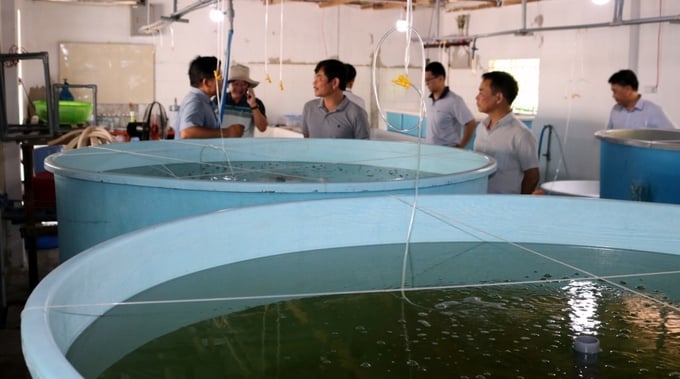
Scientists continues to master the technology of seed production for marine aquaculture. Photo: KS.
According to Ninh Thuan Department of Agriculture and Rural Development, aquatic seed production and marine aquaculture have always been the special focus of the Provincial Party Committee, People's Council and Provincial People's Committee over the past few years. These units have been directing closely and drastically in order to promote the province's potentials and advantages.
In addition to shrimp seed as a strength, Ninh Thuan province also strongly develops seed production of some several fish varieties such as pompano, cobia, pearl grouper, Pacific oyster and so on to supply for marine aquaculture both in and outside the province. The quality of marine fish seeds has been highly regarded by farmers in terms of survival rate as well as growth and development rate.
The total marine fish seed production reached over 5 million in 2021. For mollusk seed production, the province currently have 7 production facilities specializing mainly in Pacific oysters with an output of 10-15 million seeds/year. In spite of its successes, marine aquaculture in Ninh Thuan still face many difficulties and limitations; which has lead to unsustainable development, including the production of marine fish. Ninh Thuan province does not have its own broodstock so it is restricted in seizing the initiative in production.
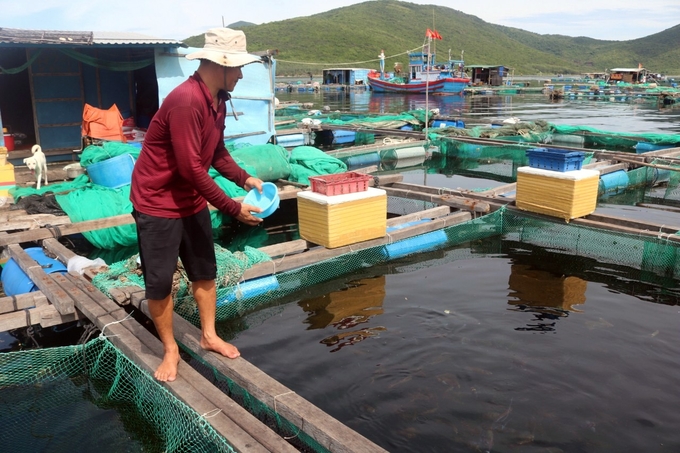
Aquaculture farmers has high expectations for aquatic breeds with potential and advantages for effective marine aquaculture. Photo: KS.
In response to these challenges, Ninh Thuan Department of Agriculture and Rural Development proposed that the Ministry of Agriculture and Rural Development support the construction of centers to raise broodstock and actively produce quality seed for commercial marine aquaculture.
Khanh Hoa, Quang Ninh and Kien Giang have been assessed as three potential and advantageous provinces to develop marine aquaculture in Vietnam. Ninh Thuan is also regarded as one of the provinces with great potential for aquaculture seed production.
Ms. Nguyen Thi Toan Thu, head of the Aquaculture Department under the Khanh Hoa Sub-Department of Fisheries, reported that the province has 252 seed production facilities by 2021, with an annual output ranging from 6 to 11 billion seed/year. These facilities include: 68 establishments producing white leg shrimp and black tiger shrimp; 32 establishments producing marine fish seed including cobia, sea bass, snapper, pompano and various types of groupers; the output totals up to 92 million seed. Additionally, there are 150 mollusk (snails, clams, geoducks, pearls, etc.) seed production establishments with an output ranging from 2 to 6 billion seed.
According to Ms. Thu, the province's aquatic seed sources supply the farmers' needs in the area and they are exported to different western and northern provinces including: Ca Mau, Ben Tre, Long An, Ho Chi Minh City, Binh Thuan, Nghe An, Hai Phong, Quang Ninh among many others.
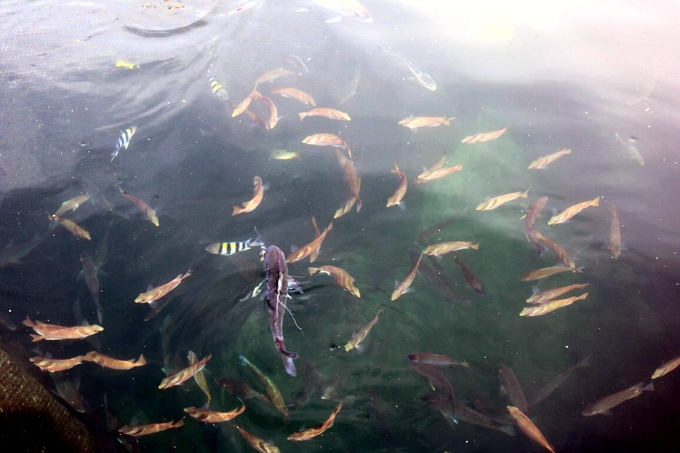
Marine aquaculture in cages on Van Phong bay, Khanh Hoa province. Photo: KS.
On the other hand, Ms. Le Thi Hang Nga, Deputy Director of Phu Yen Sub-Department of Fisheries, reported that the province currently has 3 concentrated aquatic seed production areas, with a total area of 61 hectares; the annual output is estimated at 3.1 billion aquatic seeds of all kinds. The province constructed and began operation of the Provincial Aquaculture Breeding Center in An Hoa Hai Commune, Tuy An District starting from 2021. The Center is built on an area of 8 hectares with an expected capacity of 170 million aquatic seeds annually. However, the seed production is currently focusing on brackish water shrimp, crab and marine fish (egg hatching and larval rearing); with a total annual output of only 300 to 400 million shrimp, mainly whiteleg shrimp.
In order to sustainably develop marine aquaculture and achieve the goal described under Decision 1664/QD-TTg on the approval of the aquaculture development project until 2030, with a vision towards 2045, experts believe that it is extremely necessary to promote unanimity and coordination between the coastal sectors and local governments to synchronously deploy general solutions on planning, mechanisms and policies, science and technology, production and trade and so on.
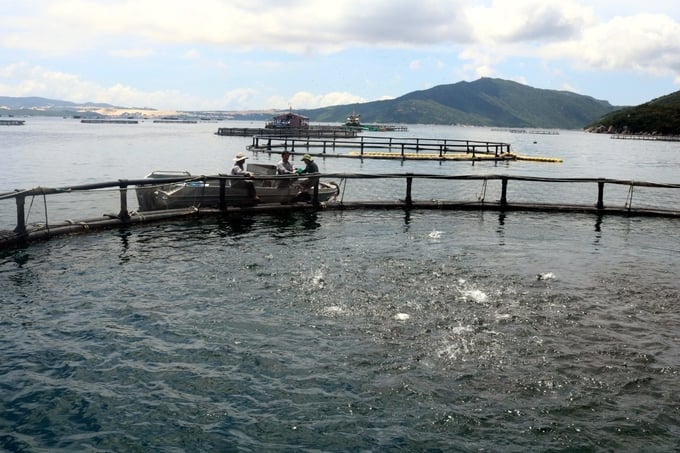
Seed production is a key factor determining the success of marine aquaculture. Photo: KS.
Namely, solutions for research, application and technology transfer in the production of aquatic seeds with high economic value, high productivity, adaptation to climate change, and potential for marine aquaculture development are very important. This is a key factor determining the success of marine aquaculture.
Ms. Nguyen Thi Toan Thu said that, in order to have quality seeds, institutes and universities need to research and apply new technological achievements in domestication and production to continuously improve the quality of broodstock. Additionally, priority should be given to the research, selection, breeding and development of varieties with high economic value such as grouper, sea bass/barramundi, pompano, cobia, snapper, queenfish, seaweed, molluscs, crustaceans and other targets for marine aquaculture. Further, research and development for several marine ornamental fish species with high economic value, suitable to the conditions of Khanh Hoa and Vietnam must also be considered.
The South Central provinces also have strengths in lobster farming. Seed sources mainly depend on imported sources from abroad and a few are exploited from the wild, so the provinces are very passive. Phu Yen province imports at least 2 million lobster seeds every year to serve production.
With goal of developing sustainable marine aquaculture in the long term, Ms. Le Thi Hang Nga proposed that the Ministry of Agriculture and Rural Development support the province to implement breeding programs with industrial marine species such as lobsters and sea fish, so that it can be proactive in the supply as well as quality of seed.
Ms. Le Thi Hang Nga said that the annual demand for aquaculture seed in the region can reach more than 3 billion, including 2.5 billion vannamei shrim seeds and 500 million seeds of other species. However, if industrial marine aquaculture is developed following the local orientation, the demand for marine seeds will increase even further.
Translated by Nguyen Hai Long

(VAN) Use of high-quality broodstock and biotechnology is regarded as the most effective approach to ensuring sustainable and economically viable shrimp aquaculture ahead of climate change and the emergence of increasingly intricate disease patterns.

(VAN) Carbon farming is a form of agricultural practices that helps absorb more greenhouse gases than it emits, through smart management of soil, crops, and livestock.

(VAN) This is a key content of the Memorandum of Understanding recently signed between the Vietnam Fisheries Society and Kunihiro Inc of Japan.
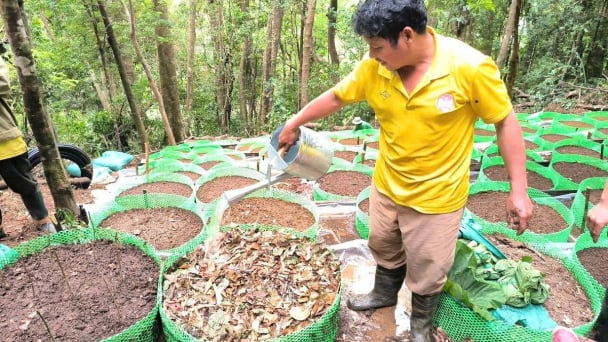
(VAN) To achieve the goal, local authorities and businesses in Kon Tum province have fully prepared the necessary conditions for the new Ngoc Linh ginseng planting season.
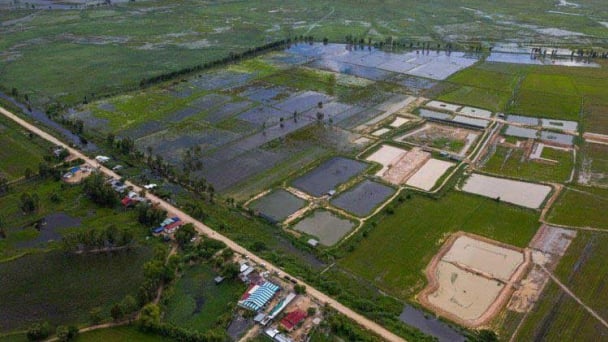
(VAN) Jiangsu province is gearing up to host training programs in Phnom Penh, the capital of Cambodia, this year to establish the Fish and Rice Corridor.
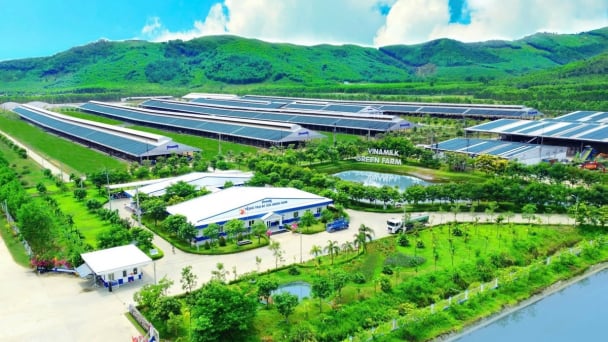
(VAN) Le Hoang Minh, representing Vinamilk, shared the company's experience in energy saving and green energy transition for production at a workshop held during the P4G Summit.
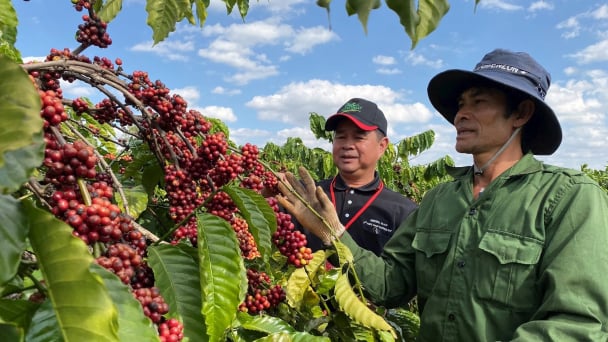
(VAN) Businesses emphasize fairness and equality when integrating social factors into their sustainable development strategies.